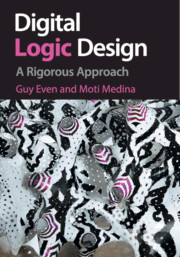Preface
Published online by Cambridge University Press: 05 November 2012
Summary
This book is an introductory textbook on the design and analysis of digital logic circuits. It has been written after 15 years of teaching hardware design courses in the School of Electrical Engineering at Tel Aviv University. The main motivation for writing a new textbook was the desire to teach hardware design rigorously. By rigorously, we mean that mathematical language and exposition are used to define the model, to specify functionality, to describe designs, to prove correctness, and to analyze cost and delay. We believe that students who study formal courses such as algebra and calculus can cope well with a rigorous approach. Moreover, they are likely to benefit from this approach in many ways.
The book covers the material of an introductory course in digital logic design, including an introduction to discrete mathematics. It is self-contained; it begins with basic gates and ends with the specification and implementation of a simple microprocessor. The goal is to turn our students into logic designers within one semester.
The rest of this preface deals with the rationale, structure, and audience of the book. We conclude with a list of the book's highlights, some of which are new to a hardware design text.
HOW TO ACQUIRE INTUITION
It is not fashionable these days to emphasize mathematical rigor. Mathematical rigor is perceived as an alienating form that dries out the passion for learning and understanding. Common teaching tactics avoid rigor (i.e., the holy definition–theorem–proof) and resort to examples.
- Type
- Chapter
- Information
- Digital Logic DesignA Rigorous Approach, pp. xiii - xxPublisher: Cambridge University PressPrint publication year: 2012



